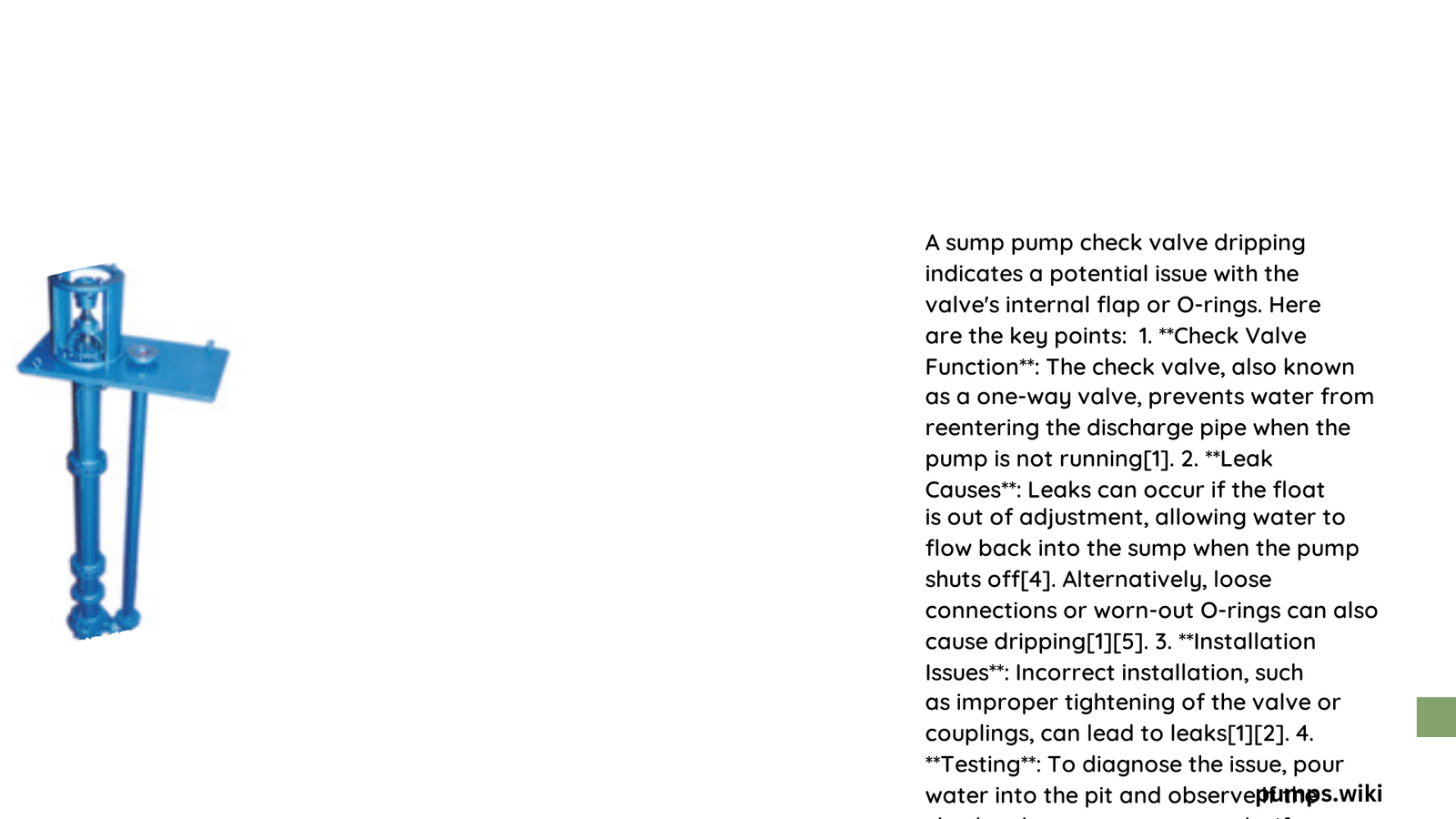Sump pump check valve dripping can lead to significant water damage and compromise your basement’s moisture protection. When water leaks around or through the check valve, it indicates potential mechanical failures that require immediate attention. Homeowners often experience this issue due to various factors like valve wear, improper installation, or internal mechanism breakdown, which can result in continuous water seepage and potential flooding risks.
What Causes Sump Pump Check Valve to Drip?
Why Do Check Valves Develop Leaks?
Sump pump check valve dripping occurs through multiple potential mechanisms:
- Connection Issues
- Loose pipe fittings
- Deteriorated threading
-
Improper initial installation
-
Mechanical Valve Failures
- Worn internal seals
- Spring mechanism degradation
- Material fatigue
How Can You Identify Check Valve Leakage?
Visual Inspection Techniques
| Inspection Method | Indicators | Severity |
|---|---|---|
| External Moisture | Water droplets around connections | Low |
| Continuous Dripping | Steady water stream | Medium |
| Pooling Water | Accumulation beneath valve | High |
What Tools Do You Need for Repair?
Essential repair toolkit includes:
– Adjustable wrench
– Pipe wrench
– Teflon tape
– Replacement check valve
– Channel-type pliers
– Bucket for water collection
Step-by-Step Repair Process

How Do You Test the Check Valve?
- Preliminary Assessment
- Disconnect power to sump pump
- Remove existing check valve
-
Inspect for visible damage
-
Water Flow Test
- Pour water into sump pit
- Observe valve performance
- Check for backflow or leakage
What Are Replacement Considerations?
Check Valve Selection Criteria
- Matching pipe diameter
- Compatible material (PVC/ABS)
- Appropriate pressure rating
- Spring-loaded vs. flapper design
How Much Does Repair Cost?
Estimated Repair Expenses:
– DIY Repair: $20 – $50
– Professional Service: $100 – $250
– Complete Valve Replacement: $30 – $75
Prevention and Maintenance Strategies
How Can You Prevent Future Leaks?
- Annual valve inspection
- Lubricate moving parts
- Monitor water pressure
- Replace valves every 5-7 years
- Ensure proper installation alignment
What Are Common Misconceptions?
- Myth: All leaks require complete replacement
- Reality: Many issues can be resolved through careful adjustment and minor repairs
Professional Recommendations
Experts suggest:
– Use high-quality check valves
– Maintain consistent water pressure
– Perform regular system diagnostics
– Consider professional evaluation for complex issues
Technical Specifications
Typical Check Valve Characteristics:
– Material: PVC, ABS, Brass
– Size Range: 1.25″ – 4″ diameter
– Pressure Rating: 50-150 PSI
– Temperature Tolerance: 32-180°F
Warning Signs Requiring Immediate Action
🚨 Critical Indicators:
– Continuous water leakage
– Unusual pump cycling
– Visible valve deformation
– Persistent moisture around connections
Final Insights
Addressing sump pump check valve dripping promptly prevents potential water damage and ensures reliable basement waterproofing. Regular maintenance and proactive monitoring are key to long-term system performance.
